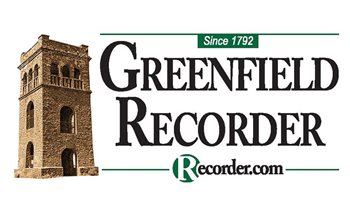Healey signs $60.9B budget, vetoes $130M

Massachusetts Gov. Maura Healey. NANCY LANE/BOSTON HERALD/TNS
| Published: 07-07-2025 3:55 PM |
On the same day President Donald Trump signed a landmark domestic policy bill that will reshape finances for years to come, Gov. Maura Healey approved a $60.9 billion budget and rolled out a companion proposal designed to empower her administration with greater cost-cutting power.
Healey signed the fiscal year 2026 budget on Friday while vetoing $130 million in planned spending amid crystallizing concerns that federal funding to Massachusetts will drop and the state may face new costs in a world where the so-called “big, beautiful bill” is the law of the land.
Between her spending cuts and changes that legislative negotiators made to cushion against financial strain, the final budget that became law, which is packed with big funding boosts for health care, education and transportation, raises spending by more than 5% but is more than $1 billion smaller than the version Healey filed in January.
The governor and her deputies will pursue other steps to further buttress against budgetary impacts from economic downturn or federal funding cuts, especially to the Medicaid insurance program.
Officials announced Friday that an executive branch hiring freeze implemented in May will remain in effect for the duration of fiscal year 2026, which runs through next June. The administration will also scrap a 2% raise for thousands of executive branch managers that was set to start in January, which officials said would save $17 million.
While Healey did not veto any of the earmarks lawmakers wrote into the budget to support projects and programs in their districts, the administration will delay paying about $125 million of those until at least the fall. Administration and Finance Secretary Matthew Gorzkowicz said if the state is in a precarious fiscal position at that point, everything will be on the table, including cancellation of the earmarks.
Some of the governor’s biggest new plans to control state spending will need buy-in from the Legislature.
Healey on Friday filed a new $130 million supplemental budget bill that her office said would create a $100 million “flexible pool of resources” that the administration could tap later in the year to deal with “changing economic conditions and federal spending decisions.” The other $30 million would go toward a housing preservation and stabilization fund, which Gorzkowicz said would provide resources to housing programs amid concerns about safety net impacts from new federal policy.
Article continues after...
Yesterday's Most Read Articles
 ‘We’re trying a new adventure’: International Cafe and Deli opens in South Deerfield
‘We’re trying a new adventure’: International Cafe and Deli opens in South Deerfield
 My Turn: A rocky road ahead for Stone Farm Lane proposal
My Turn: A rocky road ahead for Stone Farm Lane proposal
 Slew of write-ins elected in Hawley
Slew of write-ins elected in Hawley
 Baseball Roundup: Greenfield’s Caleb Thomas holds Franklin Tech to two hits as Wave advances to Class C semis with 11-1 win
Baseball Roundup: Greenfield’s Caleb Thomas holds Franklin Tech to two hits as Wave advances to Class C semis with 11-1 win
 Gov’s supplemental budget includes $7M for unpaved roads
Gov’s supplemental budget includes $7M for unpaved roads
 22-year-old farmworker airlifted to hospital after tractor accident in Sunderland
22-year-old farmworker airlifted to hospital after tractor accident in Sunderland
That bill would also grant the administration the ability to transfer some line item spending between agencies and use capital dollars instead of operating dollars to pay for some Department of Transportation workers. The governor is also asking for new authority that might prove unpalatable to some lawmakers: a limited-time ability to cut spending unilaterally from the entire state budget.
The existing state law limits a governor’s power to trim spending midway through the year only to the executive branch, which according to Gorzkowicz makes up roughly 55% to 60% of the budget. Other areas, like quasi-public agencies, local aid, retirement and other post-employment benefits, and debt service, cannot be targeted.
Gorzkowicz said the new supplemental budget would, only in fiscal year 2026, allow the administration to trim from anywhere if revenue collections fall at least $400 million below projected benchmarks or if federal policy changes cost the state budget $400 million or more.
Officials are still sifting through the federal megabill, which the U.S. House approved Thursday and Trump signed Friday, to determine its full impacts on state budgeting. Gorzkowicz said he hopes to have a better understanding in roughly a month.
A preliminary estimate from health policy nonprofit KFF suggested the Medicaid changes could cost Massachusetts $15 billion to $25 billion over the next decade.
Another outside section to Healey’s new bill would grant the state Department of Public Health the ability to set the schedule for childhood vaccines instead of relying on recommendations from the U.S. Centers for Disease Control and Prevention’s Advisory Committee on Immunization Practices — a panel that U.S. Health and Human Services Secretary Robert F. Kennedy reshaped last month.
The timing of Healey’s budget signature is unusual in two ways: she announced the action on a federal holiday that created a long weekend and she acted more quickly on an annual budget than any Massachusetts governor in at least 25 years.
For every other annual budget since fiscal year 2001, at least seven days elapsed between the final Senate enactment vote and the governor’s response, according to data tracked by the Massachusetts Taxpayers Foundation.
Gorzkowicz said the administration wanted to move rapidly on the budget because lawmakers sent it to Healey before the July 1 start of the fiscal year for the first time since 2016.
“I’m proud to sign a budget that is fiscally responsible and protects what makes Massachusetts special,” Healey said in a statement. “I’m grateful to the Legislature for their strong partnership and efficient work to develop and pass this budget for the people we serve. In Massachusetts, we are continuing to lead and do what we know works — focusing on lowering costs, protecting essential care and services, and moving our economy forward by investing in housing, transportation and our schools.”
The FY26 budget increases state spending just shy of 5.4% over the spending bill Healey signed last summer. Some of that increase is driven by the use of $2.4 billion in revenue from the voter-approved surtax on high earners.
Healey vetoed a combined $130 million from 28 line items, less than the $248 million net spending she struck from last year’s budget and the $205 million net spending she eliminated the year before.
A $27.5 million reduction this time around pairs with a directive Healey issued to the Group Insurance Commission to eliminate coverage of GLP-1 weight loss drugs for state employees unless medically necessary. Officials said that change would more closely match private health insurance, where several plans have called out the increasingly popular drugs as major cost drivers.
Healey also cut $10 million from the Massachusetts Clean Energy Center, according to Sen. Michael Barrett, the Senate’s point person for energy and climate policy and the chairman whose committee is reviewing Healey’s energy affordability legislation.
“I don’t quite see how it all computes and I’m astounded. I feel that Massachusetts is sending a very weird signal out into the world,” Barrett said. “We’re not going to see any clean energy progress on the federal front and now we’re doing something that would have the effect of doubling the federal assault.”
An official said Friday afternoon that the administration will use $10 million from an Executive Office of Energy and Environmental Affairs trust fund to bring MassCEC funding to a combined $20 million after the veto.
Legislative negotiators built some flexibility into the final state budget they shipped Healey. They trimmed the bottom line hundreds of millions of dollars below the original House- and Senate-approved versions, incorporated nearly half a billion extra surtax dollars, and left about $800 million in anticipated revenues unappropriated as a cushion against future impacts.
Gorzkowicz said the administration has spoken with budget chiefs in the House and Senate about convening a hearing in the fall with economists to examine the state’s financial footing and whether officials need to revise their tax collection estimates for FY26. The secretary must certify by Oct. 15 that the state has sufficient revenues to fulfill expenditures.
Colin A. Young contributed reporting.






 South County Notebook: Aug 17, 2025
South County Notebook: Aug 17, 2025 Mohawk Trail students to see new staff, new codes of conduct upon Aug. 27 return to school
Mohawk Trail students to see new staff, new codes of conduct upon Aug. 27 return to school Grand opening of Buckland-Shelburne Elementary School playground set for Aug. 26
Grand opening of Buckland-Shelburne Elementary School playground set for Aug. 26 Bear-y unwelcome: Why MassWildlife says it’s time to ‘break up’ with bird feeders
Bear-y unwelcome: Why MassWildlife says it’s time to ‘break up’ with bird feeders
